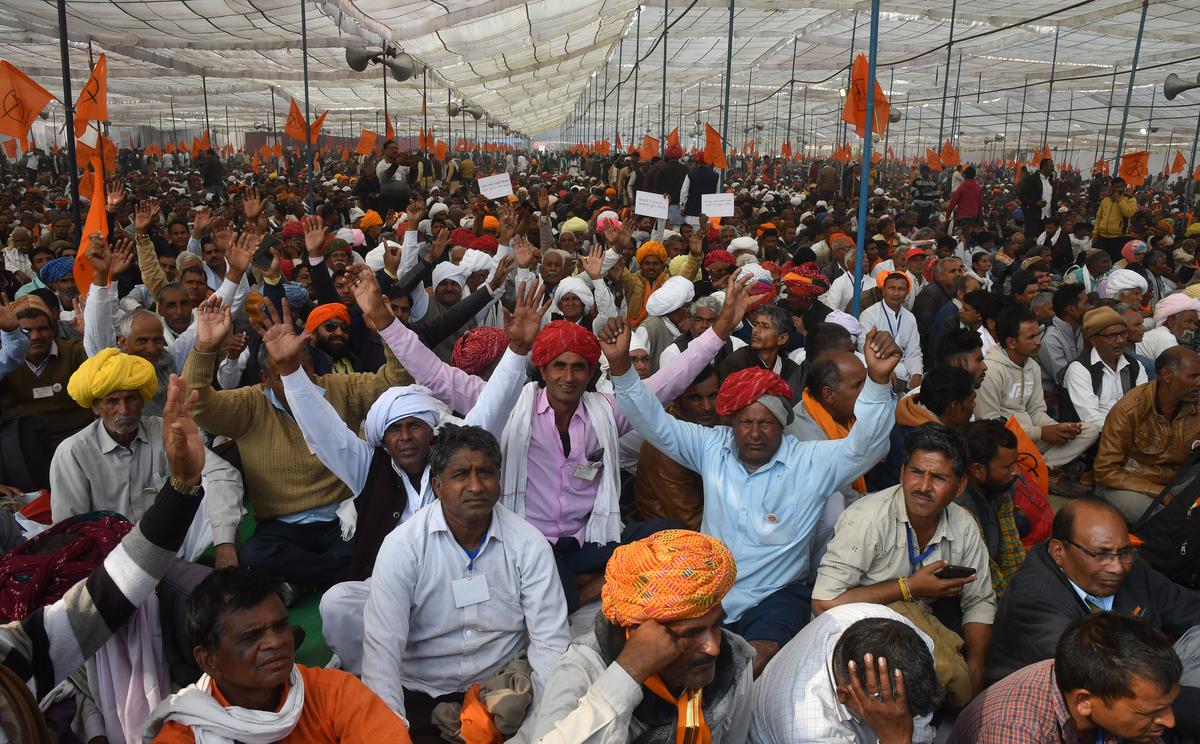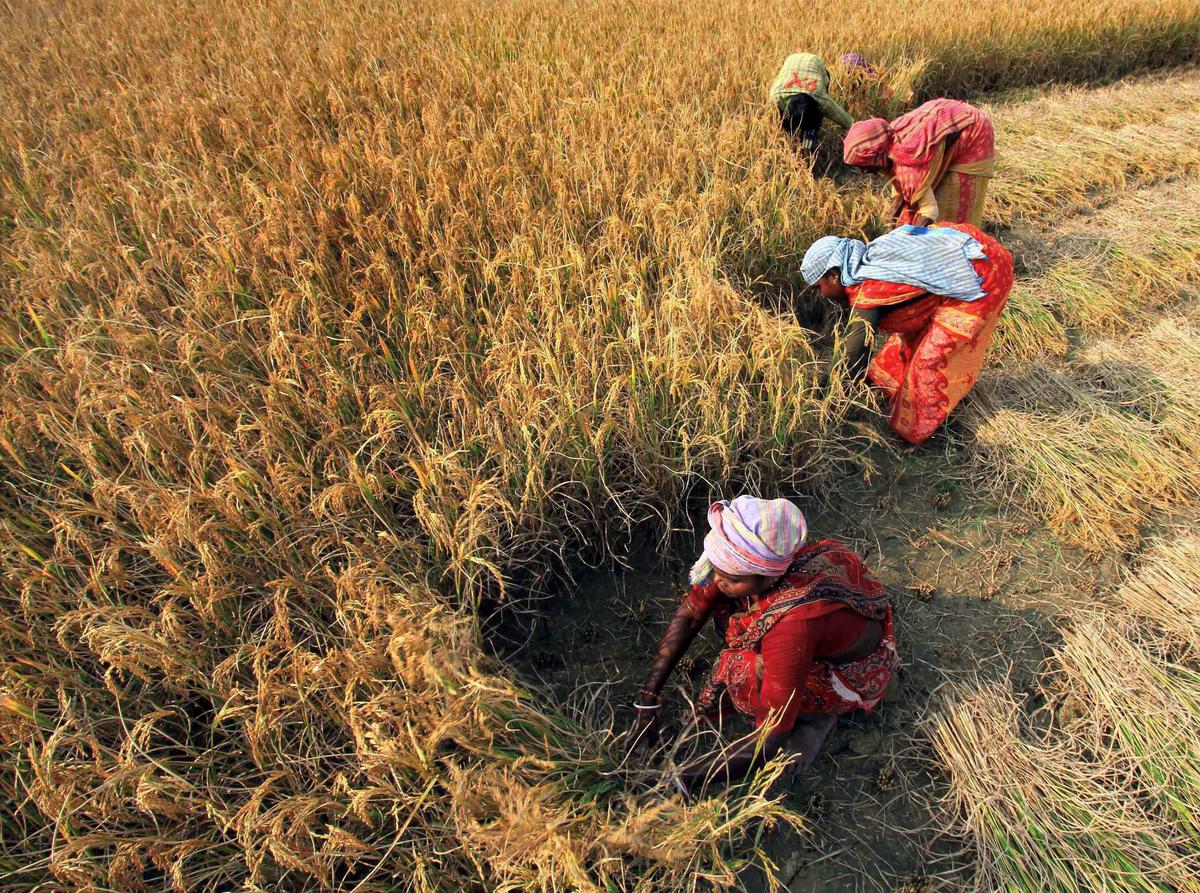In his recent book, Farming Democracy: Politics and Citizenship in Agrarian IndiaIn the study, anthropologist Mukulika Banerjee covered the period from 1998 to 2013, when she studied two villages in Birbhum district in West Bengal. Using farming as a metaphor and practice, she argues that farmers who farm have essential qualities—nourishment, patience, vigilance, and hope—which are also essential values for the “cultivation” of democracy. After the sessions of the Kolkata Literary Meet, Banerjee spoke about her book, pointing out that in order to protect India’s democratic institutions and culture, the Republic of India must be protected as there is no democracy without a Republic. . Edited excerpts:
There appears to be a global democratic backslide, and where does India stand in that context?
At every point in its history, India’s democratic credentials have been precarious. At its inception, BR Ambedkar declared India’s destiny as a democracy with an equal measure of conviction and pessimism. He warned that India’s democratic project would remain incomplete if it achieved only ‘political’ democracy of institutions and elections but failed to achieve ‘economic and social’ democracy. Democracy is not built by mere establishment of institutions; Democracy is to be built in social life and it needs constant nurturing; There is no place for complacency. You have to be alert. I use the metaphor of farming to draw attention to the fact that the activity of farming requires practices of nurturing, patience, vigilance and hope and these are also values that are essential for the cultivation of democracy anywhere. are necessary.
How difficult was the project of building a republic in a diverse country like India?
Ambedkar insisted that India should be called both a republic and a democracy i.e. India is a ‘sovereign, democratic, republic’. Republic Day is a truly national holiday, and the project of building the republic was considered important and radical, as it aimed to create horizontal bonds of solidarity among citizens. Given the deep social inequalities based on caste that existed in India, it was radical to imagine a social democracy where you were not really striving for equality but at least for fraternity, and by that we mean what we Irrespective of social class or caste background we are able to create a civility of conversation among strangers. India’s democracy has always taken the responsibility of trying to build a republic with the basic idea of Ambedkar.
If an ecosystem is divisive, how can the social fabric be protected? Is it possible to create a persistent shared space?
I think the problem with solidarity building projects is simply not having a rational set of arguments, correct as they are. Unless people feel an emotional attachment to it, I doubt it’s going to happen… Yes, we need to protect our institutions, we need to create spaces of brotherhood and we need to constantly think that we How can do it, but there is no pre template. Whoever tries to build this project has to build something that people feel a commitment to and an attachment to.

Farmers across the country are protesting against the anti-farmer policies of the central government at Ramlila Maidan in New Delhi. , Photo Credit: Sushil Kumar Verma
Take the protest of farmers only. His job was to oppose the agricultural laws. But the way they did it, the way they protested in these huge camps outside Delhi were republics of protest. He rebuilt and recommitted himself to republican ideals. Peasants of diverse backgrounds and means and from different regions lived side by side.
If you’re going to push back against the corruption of democratic institutions, it’s not just about working hard to win the next election, but reclaiming, recreating and re-imagining the spaces where We can develop an attachment to why it is important. That’s why I find the Indian polling station such a fascinating place. Let’s face it, nothing like this existed before 1950, but there’s no other place where you get real social mixing – this is where you can’t say I’m not standing next to this person Will be, all things we are so much the rest of the time is good to say.
Is there a threat to the ideals of democracy and republic?
The threat to democratic institutions is catastrophic. Because of which there is concern and we cannot move beyond 1984 or 2002 [riots] is that these were in violation of the republic’s ideals of justice and equality by using the institutions of government. When you have an organized riot, the government machinery, the police, the administration are all capable of directly or indirectly jeopardizing the basic tenets of democracy of protecting minority communities from majoritarianism. It is as if the ideal of fraternity has been uprooted.
Rahul Gandhi and his supporters during the Bharat Jodo Yatra (Unite India March) in Panipat. , Photo Credit: Reuters
Has India Jodo Yatra been able to create such a place?
Its real success is that it has been able to create a space of such solidarity. If despite our deep social injustices and inequalities of caste and class, a different kind of solidarity is created, such as at a polling booth, farmers’ protest and Bharat Jodo Yatra, then that solidarity is creating a certain kind of politics . Ultimately, as Hannah Arendt said, this is what politics is – more than power or influence, politics is fundamentally about the ability of people to come together.
To limit politics to a competitive game like elections deprives us of the idea of politics; This is a wrong assessment of the potential of politics. Politics is not just about division and competition; It is also about bringing people together.
Tell us about two villages that you have studied and what you have seen.
During the 15 years of my study, values came under stress as the circumstances in which people lived challenged them in many ways and in turn so did their responses. I record three major changes in the book – his practice of Islam, the cultivation of paddy and the election story. The book describes how, from a place of complete terror of the Left Front in the late 1990s, the villagers were able to create a situation where they could mentor a rival political party and how that brought people together. It was a slow and painstaking process that eventually saw the Trinamool Congress come to power.

Women in a paddy field in Birbhum district of West Bengal. , Photo Credit: PTI
The other big change was paddy itself – over the years in Birbhum, I have seen more and more land lying fallow and barren. Now it is not possible to grow anything. The water table has dropped too low, diesel is expensive and farming is no longer possible. The Green Revolution has gone brown.
As far as Islam is concerned – the story of Indian Islam has always been separate and distinct from the Islam of West Asia; South Asian Islam has always had a distinct flavour, it is syncretic. Islam co-exists with other religions in India and Pirs and holy men and their tombs are all over South Asia and are worshipped. Islam is therefore embedded and embedded in the landscape of the subcontinent. With the introduction of more rigorous reformist forms of Islam that focus on personal piety and practice, this is changing. On women’s mobility, the conversation became very much on why men are not growing beards.
Against this background, this book shows how economy, religion and kinship – all contribute to the story of democracy. There is a need to study democracy during elections, but also in between elections to see how the political and the non-political shape each other.
Farming Democracy: Politics and Citizenship in Agrarian India, Mukulika Banerjee, Oxford University Press, ₹1,299.
sudipta.datta@thehindu.co.in